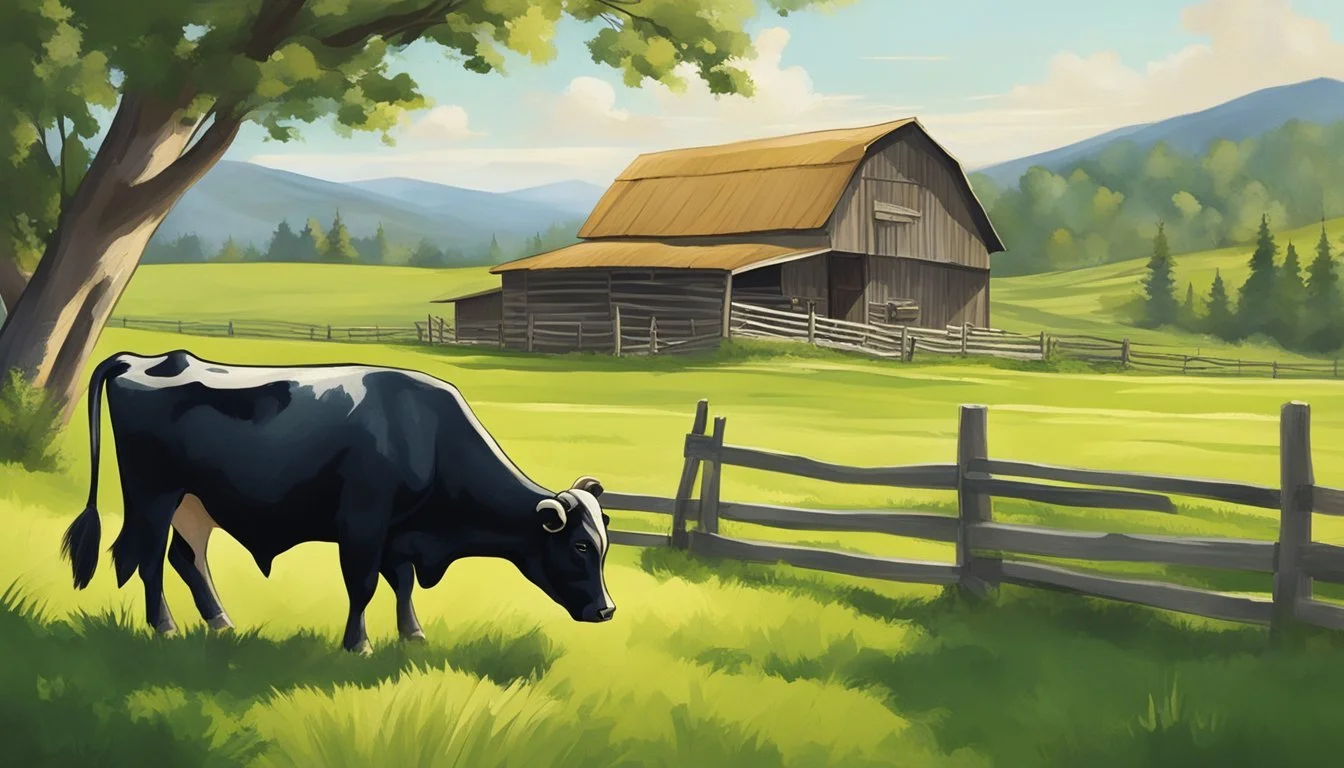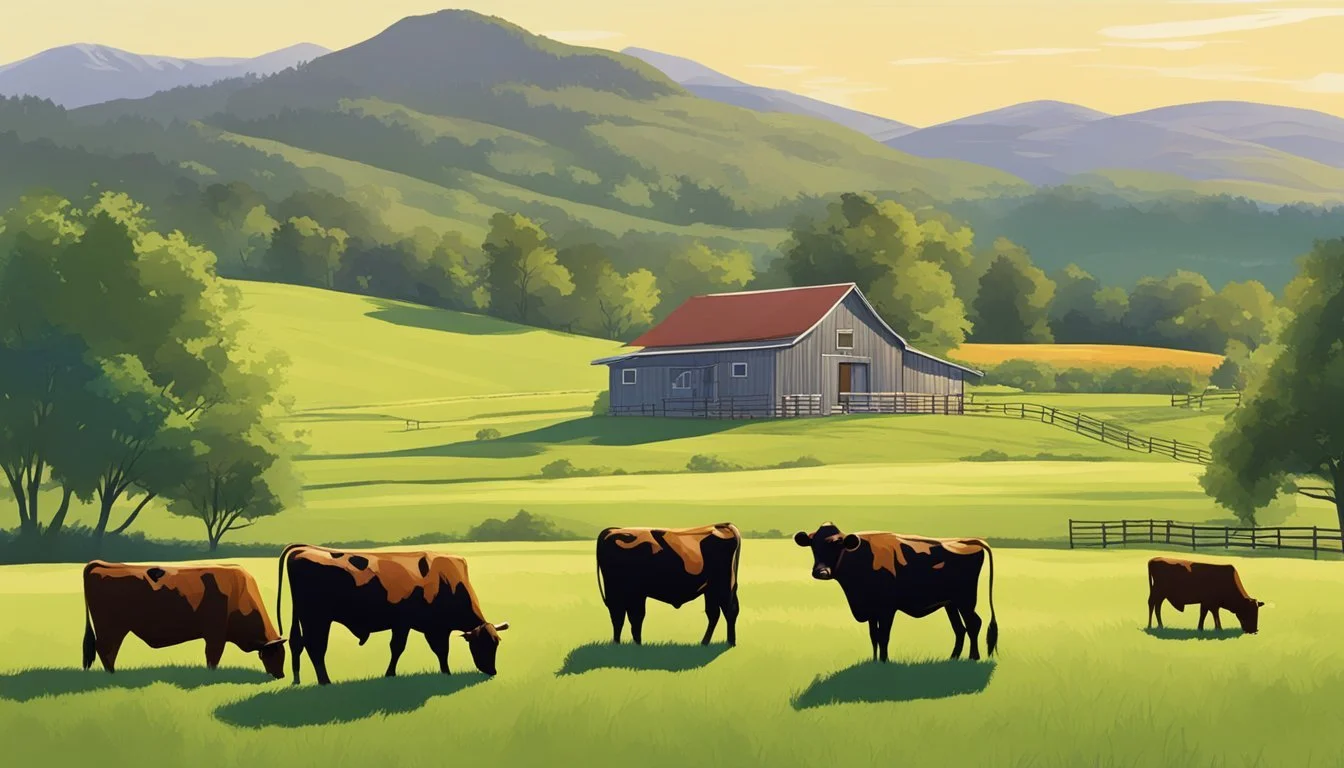Dexter Cattle and Homestead Fitness
Exploring the Health Advantages of Agricultural Life
Dexter cattle are a small, dual-purpose breed, renowned for their adaptability and efficient meat and milk production, making them a prized addition to homesteads. With their smaller stature, they are less intimidating and easier to manage, which has led to a rise in popularity among smaller landowners. The everyday tasks involved in raising Dexter cattle, such as feeding, herding, and milking, contribute to the physical fitness of homesteaders, combining daily chores with exercise.
The act of farming itself promotes a healthy, active lifestyle. The physical benefits of farming are manifold, encompassing cardiovascular health, muscle development, and increased stamina. Homesteaders who engage in the care of Dexter cattle inevitably partake in a variety of physical activities. These repeat movements, often done in the fresh air and nature, not only maintain the health and productivity of the cattle but also of those tending to them.
Balancing the demands of raising Dexter cattle with other farming tasks ensures a comprehensive workout regimen. From lifting bales of hay to traversing fields during rotational grazing, farmers benefit from a level of physical exertion that rivals structured exercise routines. This practical approach to fitness underscores the multiple benefits of farming, where nurturing the land and caring for livestock fortify both body and mind.
The Dexter Cattle Breed: An Overview
The Dexter cattle breed stands out for its small stature, robust build, and versatility. Originating from Ireland, this breed is praised for its calm temperament and adaptability to various climates.
Origins and History
Ireland is the birthplace of the Dexter cattle breed, tracing its heritage back to the early 18th century in the southwestern region of County Kerry. Initially considered a part of the Kerry cattle breed, the Dexter differentiated due to its compact and hardy nature, making it a distinctive breed appreciated for its small size and efficiency.
Physical Characteristics and Colors
Dexter cattle are characterized by their compact size and well-rounded hindquarters. A mature Dexter stands about 36 to 44 inches at the shoulder. They come primarily in three color variations: black, the most prevalent, as well as red and dun. Other physical traits include both horned and polled (naturally hornless) varieties, with white markings occasionally appearing on their underbelly.
Height at Shoulder: 36-44 inches
Color Variations: Black, Red, Dun
Horn Status: Horned/Polled
Temperament and Behavior
Recognized for their calm and docile temperament, Dexter cattle are considered easy to handle, which makes them a favorite for those new to cattle ownership. Their peaceful nature contributes to their popularity, especially on smaller farms and homesteads where close interaction with humans is common.
Genetic Diversity and Breeding
As one of the smallest cattle breeds, Dexters are renowned for their genetic diversity, which aids in healthy breeding practices. This heritage breed has the ability to thrive in various environmental conditions due to its Irish origins and hardy genetics. Dexter cattle are prolific breeders and can produce offspring well into their later years, indicative of a strong genetic lineage.
Homestead Benefits of Raising Dexter Cattle
Raising Dexter cattle on a homestead offers a blend of economic and practical advantages due to their versatility, efficiency, and dual-purpose characteristics.
Advantages for Small Farms and Homesteaders
Dexter cattle are well-regarded for their hardiness and adaptability, making them an ideal choice for homesteaders and small farms where land and resources might be limited. They are smaller in size than conventional breeds, with cows typically not exceeding 38 inches in height and having an average weight between 750 to 900 pounds, while bulls can reach up to 42 inches and weigh between 900 to 1,000 lbs. This compact size means they require less space and can be more easily managed, a significant benefit for those with restricted acreage.
Dual-Purpose Utility: Milk and Meat Production
Dexter cattle are classified as a dual-purpose breed, recognized for both beef and dairy production. Their milk is high in butterfat, making it suitable for butter and cheese production, while their meat is known for its exceptional quality. Homesteaders often appreciate the ability to obtain both dairy and meat from the same animal, maximizing the utility of their livestock investments.
Grazing Efficiency and Land Management
These cattle are efficient grazers, often thriving on pasture where other cattle might need supplementary feed. Their smaller size means they can be sustained on less forage, benefiting homesteaders by reducing feed costs. Dexter cattle's adaptable grazing habits also contribute to effective land management, as they can help control brush and improve pasture quality over time.
Economic Factors and Maintenance
In terms of economics, Dexters offer lower maintenance costs due to their efficient grazing and hardiness; they require fewer inputs compared to larger breeds. This efficiency translates into long-term cost savings for farmers and homesteaders. Furthermore, their longevity supports a sustainable farming model, with cows often continuing to produce calves well into their later years, out-producing larger breeds over their lifetime.
By focusing on Dexter cattle, homesteaders and small farm owners can reap the benefits of a manageable, versatile livestock that supports both dairy and meat production, proves efficient in grazing and feed consumption, and offers an economical path to maintaining a productive and sustainable homestead.
Caring for Dexter Cattle
The physical benefits of farming can be greatly complemented by the ease of raising Dexter cattle, provided their specific care requirements are met. These cattle are acknowledged for their hardiness and docile temperament, making them suitable for diverse homestead environments.
Feeding Requirements and Nutrition
Dexter cattle thrive on pasture-based diets, but they can also be supplemented with grain when necessary. They require a diet that provides adequate nutrition to support their dual-purpose nature, yielding both meat and milk. Adequate feed is crucial:
Grass and forage for the majority of their diet.
Supplementary grain feed to ensure balanced nutrition, especially in winter or for lactating cows.
Shelter and Space Considerations
Shelter for Dexter cattle does not need to be elaborate due to their hardiness, but it should provide protection from extreme weather. Space considerations include:
Access to a dry, draft-free shelter.
Sufficient pasture to roam, exercise, and graze.
Health Management and Veterinary Needs
Health and veterinary care are paramount for maintaining a healthy herd. Dexter cattle require routine:
Vaccinations and deworming.
Hoof care and monitoring for signs of illness.
Regular check-ups with a veterinarian.
Handling and Temperament
Dexter cattle are known for their docile temperament, which facilitates ease of handling. This breed's behavior characteristics include:
Calm and manageable nature, making them suitable for beginners.
Proper handling techniques and gentle interaction are encouraged to maintain their temperate disposition.
Biodiversity and Ecological Contributions
Dexter cattle offer significant advantages for sustainable farming and genetic conservation, directly impacting biodiversity and ecological health on small and larger scales.
Role in Sustainable Farming Practices
Dexter cattle, as one of the smallest cattle breeds, are a fitting choice for small landholders aiming for sustainable agriculture. Due to their size, they require less pasture and are efficient foragers, thus supporting land fertility and pasture health. Their grazing habits encourage plant diversity and soil aeration, fostering an ecological balance. Moreover, their resilience and adaptability to varying climates also reduce the need for supplemental feeds and inputs like pesticides and herbicides.
Sustainable Benefits:
Reduced pasture requirement
Enhanced soil fertility and structure
Encouragement of plant biodiversity
Contribution to Genetic Conservation
The conservation of Dexter cattle promotes genetic diversity among bovine populations, crucial for the adaptability and longevity of cattle breeds. These cattle serve as a genetic reserve for traits such as hardiness and disease resistance. Preserving Dexter cattle contributes to the resilience of livestock in the context of changing environmental conditions and disease challenges.
Genetic Conservation Aspects:
Preservation of unique genetic traits
Maintenance of heritage breed populations
Support for ecological adaptations in cattle
Community and Resources
When entering the world of homestead farming with Dexter cattle, farmers and hobbyists alike will find an invaluable support network through resources and associations dedicated to this breed.
American Dexter Cattle Association and Support
The American Dexter Cattle Association (ADCA) functions as a cornerstone resource for Dexter cattle breeders. It provides support through various services including a comprehensive breeder directory, educational materials, and assistance with breed standards. Membership in ADCA allows ranch owners and hobbyist farmers access to exclusive resources and up-to-date information on best practices for Dexter cattle care, breeding, and management.
Networking and Knowledge Sharing
Networking within the homestead and Dexter cattle community is crucial for both new and experienced breeders. Engaging in knowledge sharing activities, breeders can exchange information about cattle management, sustainable farming practices, and even marketing strategies. This collaboration is often facilitated through regional clubs, online forums, and social media groups. By connecting with other homestead farmers, individuals can form a supportive network that enhances their ability to run a successful ranch or hobby farm.
Conclusion
Dexter cattle have established their role on homesteads as a versatile and manageable livestock choice. They contribute to homestead fitness through the everyday physical tasks they necessitate, such as feeding, milking, and general care. These activities inherently engage the farmer in a routine of physical labor, reaping benefits for cardiovascular health, muscle strength, and overall fitness.
The breed’s small size and dual-purpose nature make Dexters particularly suited for smaller farms, emphasizing the importance of sustainable and effective land use. With the potential for high meat yield and production of quality milk, they offer practical advantages in a compact package.
Looking forward, Dexter cattle are poised to continue their positive impact on homestead farming practices. Their ability to thrive on less acreage aligns with a growing interest in maximizing agricultural output on limited resources. This sustainability is paramount for the future of farming and environmental conservation.
Homesteaders may anticipate continued physical rewards from the day-to-day demands of Dexter cattle rearing. The result is a symbiosis of enhanced well-being and agricultural productivity, highlighting the mutual benefits of nurturing such resilient and beneficial animals.





